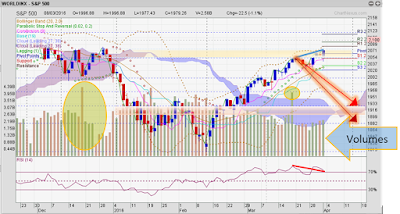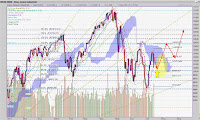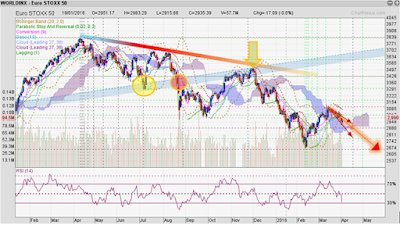Surprises - to the Downside!
"... keep in mind that the dominant trend remains persistently bearish. That is the bias. In a bear market, surprises come to the downside. Typically, there is no safe place to hide in a Dow Theory Primary Tide Bear Market. Even those stocks that have held up relatively well through most of the Bear Market eventually succumb to the relentless tide of selling."The gentleman, who made this statement, speaks with decades of experience in analysing capital markets. One major query remains: are we - or are we NOT - in a primary tide bear market phase? How do we decide? Who decides? And how fatalistic should we view such a decision? No way out? Must bite the bullet?
Robert W. Colby, CMT, Chartered Market Technician, http://robertwcolby.com/index.html
Meanwhile...
Short Term Events:
 |
| BRAZIL's BOVESPA: the lowest point 8/8/2011 |
 |
| Korea entry on 22nd August low! +13% |
As to our gold positions, we purchased those in July 13 and held it, - till yesterday. The market ended on a massive spike again at USD 1883. I guess that in most portfolios the actual fund return is probably near 15%, a nice profit banked at the right time, - I think. The next few weeks look less promising for gold prices.
In our ProActiveManagement contingent, we sold out of high beta funds - again. This was a hectic 8 weeks as we adjusted portfolios at least 3 times into the direction of the trend - within hours of its turning point! Portfolios gained about 2-2.5%, almost recovering the losses we suffered in the inevitably late exit on August 4th. Still, our portfolios were spared the massive market collapse that followed immediately after that, and so YEAR TO DATE, the margin between global market indices and our portfolios has increased to ABOVE +15%. Buying-In next time means buying at a 15% discount or thereabouts.
While we again switched to safety already, it will take till later next week before the iFAST statement reflects the new positioning and gains banked.
Medium Term Reflections
I started this posting with a warning by Robert W Colby, who seems to suggest we are in a primary tide bear market! Some people think it is a matter of perception relying on simplified statements like "the glass is half full" or "the glass is half empty", but perceptions alone do not indicate where we are at. The rise in stocks from the lows in March 2009 was huge by comparison to the latest volality and so few people would consider the recent correction as the start to a new bear market phase. BUT, it is part of a longer term premier tide bear market that arguably started in autumn 2007. Therefore, the statement must be received with a serious mind because a bear or bull market must be specified accurately so as to make the necessary adjustments to one's trading.
Bulls & Bears
The Dow Theory offers specific parameters for both bull and bear markets, and distinguishes between 'primary' and 'secondary' with the first one the more dominant by nature. The main measure I use to check what's what is to look at the investor and/or market behaviour at turning points and technical support and resistance.
If the market happily extends rallies beyond resistance and finds frequent support in the market at noted support levels, then we clearly are in a BULL PHASE. IN A BULL MARKET the surprise is to the UPSIDE.
If the market displays frequent pull backs to lower lows, with intermittent "relief rallies" (=of shorter duration than the move down), - when the relief is disappointing in momentum and target upsides fail to be achieved repeatedly, while the downside is extended, then we are dealing with a BEAR PHASE. In a BEAR PHASE the surprise tilts to the DOWNSIDE.Identifying (-and being able to respond to-) the "beginning" and the "end" of such periods will be crucial. That is why we need technical analysis.
If you have followed this blog for some time, you will have noticed that the primary tide BEAR SCNEARIO, is more prevalent in my advice, though I did not mentioned the term outright before now. From this perspective the last rather boisterous rally has been cut short, when assessed with the help of technical indicators.
A bear market should not stop experienced professionals adapting their strategy to the changing environment. But it requires considerable skill to stay ahead of the tide (=in positive territory).
And NO, it's not because the primary tide is stronger, more visible, and easier to detect, it is because people become disheartened much quicker, to the point of hopelessness, like what we have seen just a few weeks back in August (riots in the UK, for instance). Even long years of experience do not necessarily protect you from the alarming signals of fear, panic. It can be a time when brains freeze up.
Ways To Tackle Bear Markets
The only way round this is focussing on shorter-term opportunities, - and work almost exclusively with indicators that are adjusted to bear market conditions. Then we can see chances again where others have opted for a fatalistic attitude, accepting the resulting losses as "unavoidable", part of longer term success... Annoyingly, they still stand up and claim that it's all the fault of "somebody or else" (blame phase) rather than revisiting their objectives, trading style and parameters and make the necessary adjustments.
When Change Is Not An Option
 |
| A Startling Spike in Aoril, then downhill only! |
The fund was launched late in 2010, had an unremarkable start ("the USD was too strong"), then a super spike around March to April this year, but has not got anything "right" since. It fails mainly because its working assumption that
a) the USD can only get weaker, and
b) it's interest rates will stay as low as they are now
is not in sync with a bear market phase, full stop! It is the prerogative of your financial advisor to tell you not to use an investment tool like this.
When Change Is Part Of The Process
 By contrast, the next example shows managers who obviously realise the need to start 'working' the market applying all the tools and skills they can muster. This one is from the Franklin Templeton Fund house: FTIF-Templeton Glb Total Ret A(mdis) SGD-H1. It also has an emphasis on currencies, and a total/absolute return approach, suffered uncharacteristically in August but managed to pull up laudably.
By contrast, the next example shows managers who obviously realise the need to start 'working' the market applying all the tools and skills they can muster. This one is from the Franklin Templeton Fund house: FTIF-Templeton Glb Total Ret A(mdis) SGD-H1. It also has an emphasis on currencies, and a total/absolute return approach, suffered uncharacteristically in August but managed to pull up laudably. September 2011
September is here, and with it a time for more changes. Seasonally, it is also regarded as one of the more treacherous investment periods of the year. Is the seasonal effect upon us again? Read more in the coming updates.




Comments